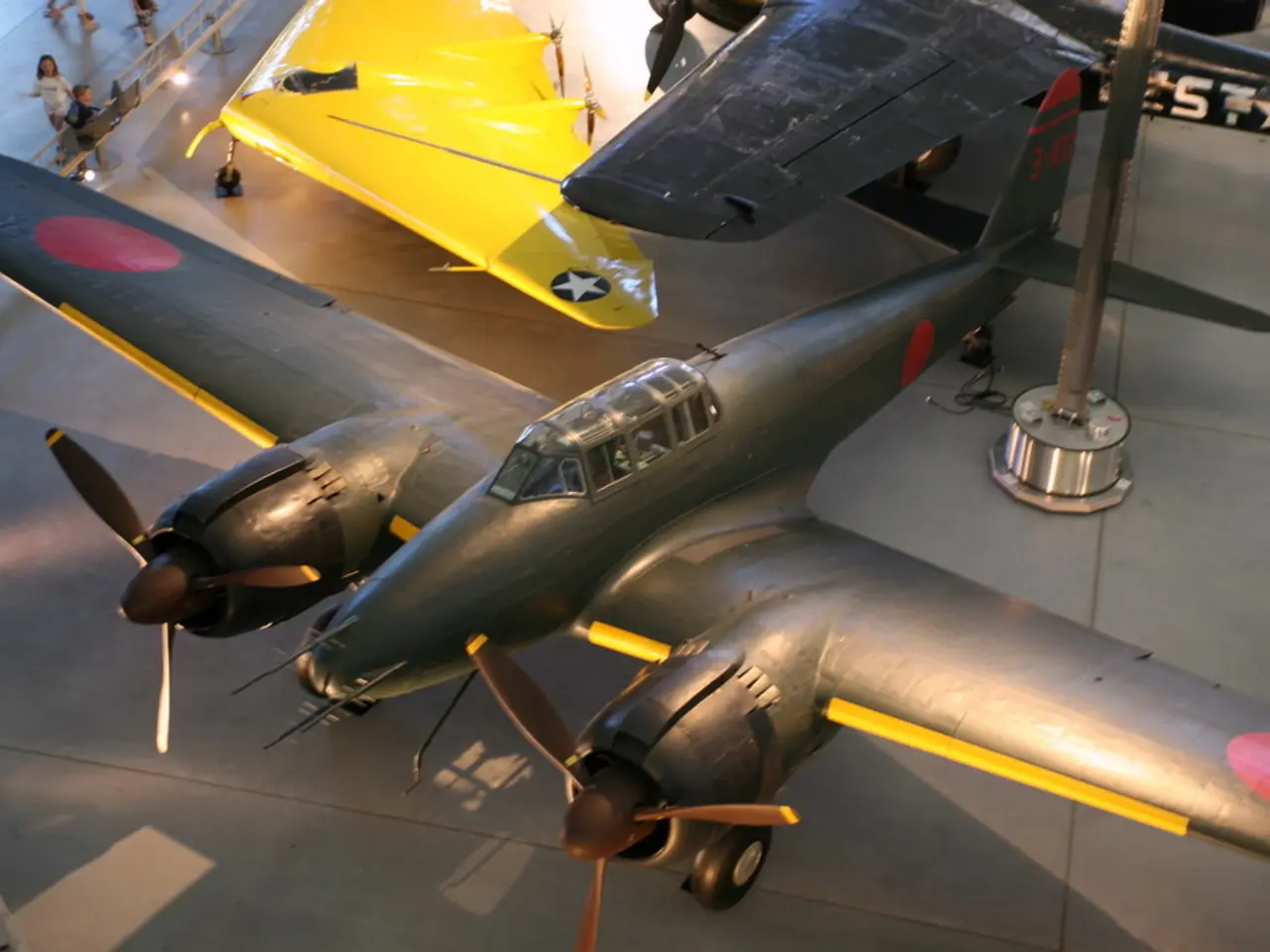Air Force B-52 Bombers Accompanied by South Korean and Japanese Military Fighters During Defense Leaders' Meeting
In a significant move towards regional security, the United States, South Korea, and Japan conducted a joint flight exercise and held the annual Tri-CHOD meeting in Seoul on the same weekend in July 2025. These activities underscored a strengthening of military cooperation and readiness among the three allies, as they face evolving threats, particularly from North Korea and China.
The trilateral flight, featuring two U.S. B-52H Stratofortress bombers escorted by Japanese Mitsubishi F-2 and South Korean KF-16 fighters, showcased the ability of the three nations to rapidly respond together to regional security challenges. This was the third such flight in 2025, indicating sustained operational collaboration and joint training to enhance collective defence capabilities.
According to the U.S. Indo-Pacific Command, these coordinated military activities foster mutual trust among the allies and reinforce their collective will and ability to maintain security and stability in the Indo-Pacific. Such joint exercises send a clear strategic message of unity and resolve to potential adversaries, addressing concerns over North Korea’s military provocations and China’s regional ambitions.
The annual meeting of the three countries' top military officers—the Chairman of the Joint Chiefs of Staff from the U.S., South Korea, and Japan—served to coordinate their defence policies and operational planning. They reaffirmed the critical role of trilateral security cooperation in promoting peace and prosperity on the Korean Peninsula and the wider region, emphasizing deeper cooperation to confront both regional and global security challenges.
The trilateral exercises coincide with broader military deployments and exercises, such as the Resolute Force Pacific exercise with over 300 aircraft, enhancing interoperability among the U.S., South Korean, and Japanese forces.
The joint statement condemned the DPRK’s continued development of unlawful nuclear and ballistic missile programs and urged the DPRK to immediately cease all unlawful activities to destabilize the Korean Peninsula, the Indo-Pacific, and beyond. The defense chiefs agreed to continue coordination toward the complete denuclearization of the DPRK in accordance with relevant United Nations Security Council Resolutions (UNSCRs).
In a joint statement, the three defense chiefs reaffirmed that trilateral security cooperation has played a key role in promoting peace and prosperity in the Korean Peninsula and Indo-Pacific. They pledged to continue working together to respond to the DPRK's threats and maintain regional stability in a volatile strategic environment.
- During the joint flight exercise in July 2025, U.S. B-52H Stratofortress bombers, escorted by Japanese and South Korean fighters, demonstrated the swift defense response these nations can mount together in the face of regional security challenges.
- The annual Tri-CHOD meeting in Seoul solidified defense policies and operational planning among the United States, South Korea, and Japan, reemphasizing their commitment to maintain security and stability in the Indo-Pacific.
- Coinciding with Resolute Force Pacific exercise featuring over 300 aircraft, these trilateral military activities enhanced interoperability among the U.S., South Korean, and Japanese forces.
- The joint statement from the defense chiefs denounced the DPRK's illegal nuclear and ballistic missile programs and urged its immediate cessation, destabilizing activities that threaten the Korean Peninsula, the Indo-Pacific, and beyond.
- In accordance with UNSCRs, the defense chiefs agreed to collaborate towards the complete denuclearization of the DPRK, working tirelessly in the face of evolving regional and global security challenges.
- The defense chiefs reaffirmed that trilateral security cooperation among their nations plays a crucial role in promoting peace and prosperity, vowing to continue working together to confront existing and future threats, ensuring regional security and stability in the volatile strategic environment.








